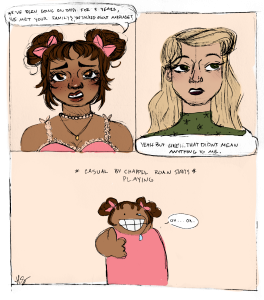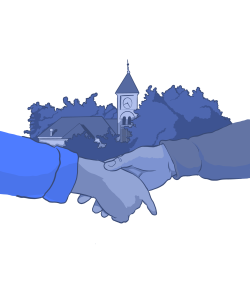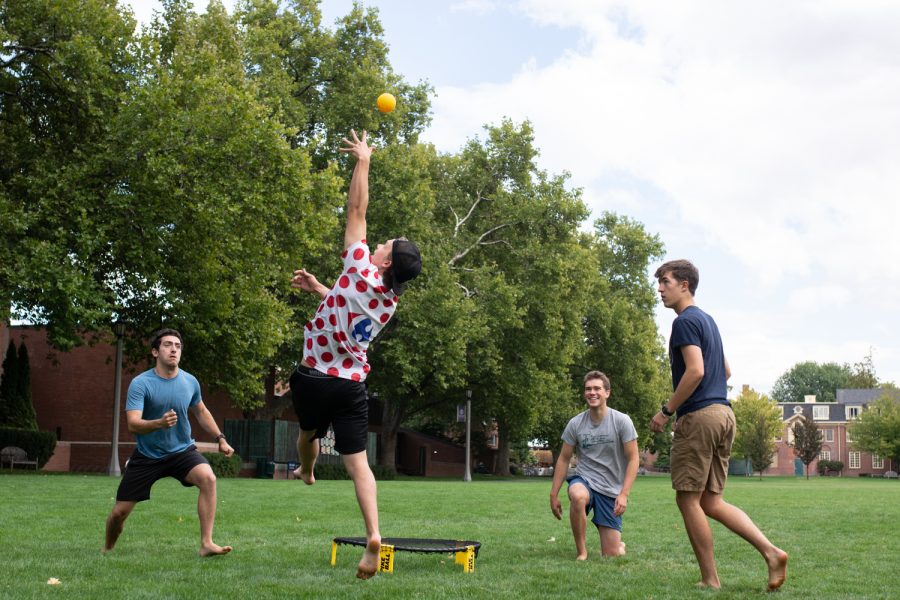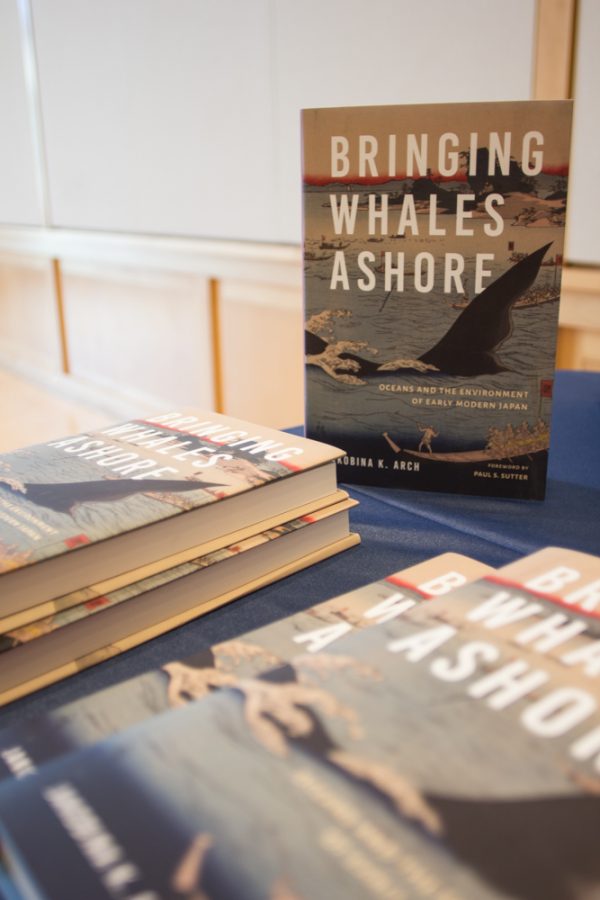IT’S SPRING BREAK! I’m in Chennai, home of Kovalam Beach, where it’s a 24/7 beach volleyball playing, ring tossing, seafood-eating blowout. THINGS ARE ABOUT TO GET CRAZY. Except…I’m really here for a week-long internship learning the finer points of solid waste management in metropolitan India. The School of Poop* is in session.
After roughly seven weeks on the Indian sub-continent, the theme of this semster is quickly solidifying in my mind as “here are brief introductions to many social, economic and political issues that you, Kate, have neither the know-how nor the authority to begin to solve.”
For example, what do you say to a community of Hindu Pakistani refugees that came to India to escape religious persecution, only to live indefinitely in legal limbo as second-class citizens? A few weeks ago, the other SIT students and I visited a makeshift village near the India-Pakistan border. These villages were uniquely affected by this border, which was delineated along religious lines shortly after India’s independence in 1947. Pakistan for Muslims on one side, India for Hindus on the other. For the unfortunate few who found themselves on the wrong side of the line, the choice was either stay in Pakistan as a minority, or cross the border with a tourist visa and hope the government grants you and your family permanent citizenship. The residents of this village chose the latter, and they’ve been fruitlessly awaiting citizenship and dignified livelihoods for a long long time. At best, it takes refugees seven years to gain citizenship according to government policy. More realistically, citizenship is never achieved due to “missing” paperwork or inability to afford an adequate bribe for government bureaucrats. In the meantime, these formerly college-educated Pakistanis are forced to work as miners in awful conditions. Since the government won’t provide them with healthcare, tuberculosis is rampant. Clean water is scarce. All they wanted from us that day was a little help. What do you say to that? All I felt I could do was to spread their story.
So here I am in Chennai on the other side of the country, getting up close and personal with a crisis of a different kind. The greater Chennai metropolitan area is home to about 8.9 million people, making it the fourth most populous area in India. Needless to say, that many people can produce a lot of trash.
It’s everywhere- piled on every road and sidewalk, clogging gutters, strewn about the rocky shores of the Bay of Bengal. Chennai itself produces 5000 metric tons of municipal waste every day, and that’s not counting the stuff that’s informally dumped in areas where the government doesn’t come around to collect it. As the situation stands now, the amount of trash that is collected ends up being dumped somwhere else. This is a huge ecological strain, as the piles emit large amounts of greenhouse gases as they decompose.
So, in a style fitting with my self-proclaimed theme if the semester, my SIT companions and I set out to learn more about the magnitude of this crisis that we don’t really have the skills or know-how to contend with. But this time, we found signs of hope. With the sponsorship of Sathyabama University, a Catholic college in Chennai pionering research in waste management, we got the chance to visit two NGOs making a dent in the waste management scene of Chennai by turning trash into a resource.
These organizations, Hand in Hand and Exnora Green Pammal, handle a very small proportion of the Chennai area. But their methods have the potential to greatly ease the severity of the trash crisis in India if propagated. Both organizations do similar things: they hire previously disempowered women to collect and sort trash, and they turn the trash they collect into compost, bio-gas, and value-added goods. In other words, both sites have giant cement tubs where organic waste is turned into vermi- and traditional compost. Both have anaerobic digesters that turn cooked kitchen waste into methane that can then be burned as fuel or converted to electricity (the by product can be made into compost too). Both crush plastic and sell it to be re-purposed elsewhere (the city of Chennai just announced it will buy the plastic for use in a new road construction project!). Both are succeeding in coming up with innovative solutions to a very very big problem in an increasingly growing country of consumers and wasters.
The problem here is the lack of coordination between the two. There are technologies out there to sustainably handle waste, but too little effort is made to bring this technology together in a cohesive waste management system that covers more than small enclaves within cities. The government has shown that it can’t handle the task of waste management on its own, and a public-private partnership is needed. The other problem is public attitude about waste. It’s one that I sometimes feel too, when searching for a place to put an empty plastic cup on the street when there’s trash all around me: what’s the use?
As an American who will be in this country for less than four months studying sustainable development, I’ll admit that I’m losing my fortitude. It’s not hard to mentally fast-forward a couple months when I’ll get on a plane back to the developed world and be completely cut off from the urgent crises of development that I’m seeing now. I’ll have done nothing real to alleviate them, or have gained enough of an understanding to do more than marvel at their unsolvability.
However, I think that’s okay. Chennai’s trash isn’t my problem. The situation of Pakistani refugees is tragic, but there’s certainly no authority I have that can do anything about it. Bottom line: the issues of India are having a way bigger effect on me than I will ever have on them. Maybe another theme of the semester: “realizing that you have the most empowerment and stake in the welfare of the place you call home.”
*Vermi-composting, a process I became all too familiar with this week, involves feeding partially decomposed organic matter (leaves, fruits, veggies…) to thousands of worms, who over a period of about 60 days leave behind pure, nutritious poop that’s then sold as compost. The decomposition process is helped along by a slurry of cow dung (a liquid-y mix of dung + cow urine) that’s chock full of plant disease-fighting micro-organisms. Needless to say, I took every opportunity to stick my hands into the finished product.










Tricia • Mar 22, 2012 at 2:03 pm
Thank you for sharing the stories of Pakistani Hindus in Rajasthan who are waiting for Indian citizenship. A couple notes for readers of this blog:
The statement, “Pakistan for Muslims on one side, India for Hindus on the other,” is not correct. India was designated as a secular country at partition, though secular manifests itself very differently in India than it tends to in western countries. At the time of partition, most Hindus (as well as Sikhs and other religious minorities) who lived in newly-created Pakistan chose to move to India. While many Muslims moved to Pakistan, many stayed in India; at present India is home to the world’s third largest population of Muslims.
I should also note that the “unfortunate few who found themselves on the wrong side of the line” wasn’t a small number of people. An estimated 14.5 million moved between the countries in the tumultuous months surrounding Partition. It was one of the largest migrations in human history.
kateroberts • Mar 22, 2012 at 7:20 pm
Thanks for clarifying. It’s an incredibly complex issue that would take much more space than I’ve given it for a decent explanation.